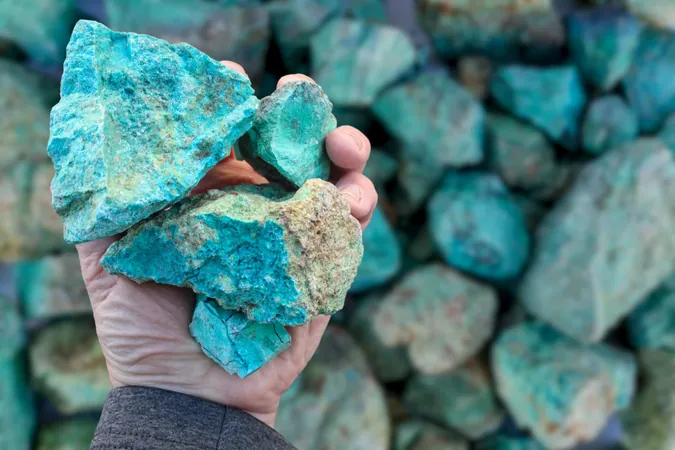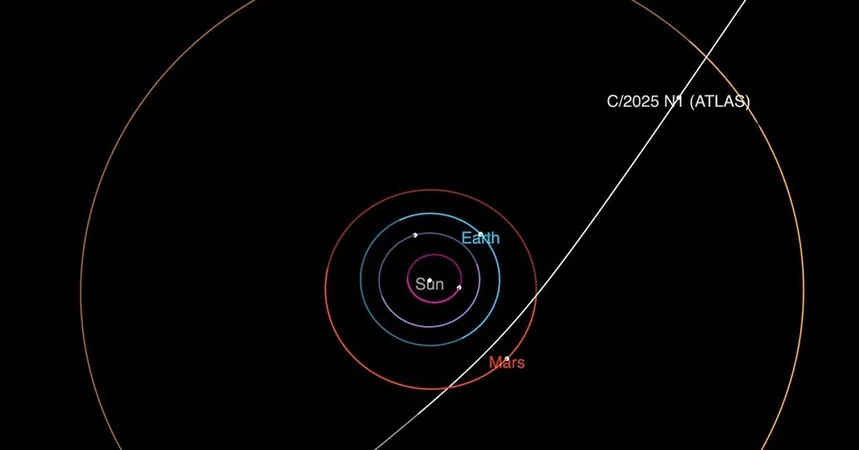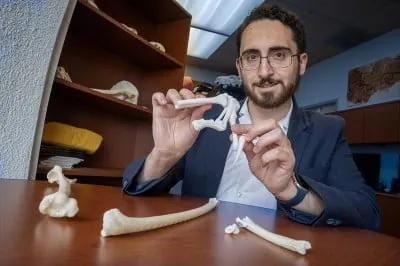
Are We Mimicking Earth's Natural Processes in Mineral Processing?
2025-05-16
Author: Emma
The Fascinating Concept of Geomimicry
In 2018, Gregory Unruh coined the term "geomimicry," which refers to emulating Earth’s geological processes in product design and manufacturing. This raises an intriguing question: Is the way we process minerals effectively a reversal of how nature creates mineral deposits?
Nature vs. Human Intervention: A Clash of Timelines
Mother Earth continuously cycles through creating and destroying minerals over millions of years via erosion, deposition, and metamorphism. In stark contrast, humans can extract and process these minerals—like potash, copper, gold, and lithium—within mere hours or months. As a form of extractive metallurgy, mineral processing involves separating minerals from their ores swiftly and efficiently. But are we merely mimicking nature, or are our methods fundamentally different?
While mineral processing might seem like unmaking what nature has meticulously formed, the approaches differ significantly due to technological intervention. Earth operates through gradual, open systems, while human processes are closed, industrialized, and focused on quick results. Occasionally, nature does yield pure elements such as gold and silver, but unlike nature, our processing often requires further refining to achieve similar purity.
The Role of Technology: Amplifying Natural Forces
Both nature and humans depend on elements like gravity, water, temperature, and microorganisms. However, humanity leverages tools and technology to speed up these processes. For instance, while water naturally moves particles in mineral deposits, we employ hydraulic systems for rapid extraction. Although this allows us to imitate Earth’s forces at breakneck speed, it raises concerns about the long-term environmental toll.
Significant Differences in Mineral Processing
Several key differences highlight why geomimicry isn’t fully embraced in mineral processing: - **Timeframe:** Nature takes millions of years, while our methods are instant by comparison, stressing the finite nature of Earth’s resources. - **Spatial Flexibility:** Earth’s processes are localized and depend on specific geological conditions, whereas humans can source materials globally. - **Selective Focus:** We adapt technology to target specific minerals, while nature’s processes shape entire ecosystems. - **Impact on Landscapes:** Human extraction can permanently alter geology and leave behind waste, unlike nature's continuous, adaptive reshaping of landforms.
A Double-Edged Sword: Resource Management and Responsibility
Think of Earth’s mineral deposits as a savings account built over eons; humanity is both the spender and the manager. Yet without prudent management, we risk depleting this account for future generations. Our ingenuity has led to innovations mimicking geological forces, but are we genuinely respecting Earth’s limitations? Mineral processing extends rather than reverses natural systems, as Earth’s forces will always surpass our industrial efforts.
A Reflection on Resource Consumption
As we reflect on our resource utilization, let’s ask ourselves the essential question: What have you done today that didn’t involve a mineral? While enjoying the benefits of these extracted resources, we must remain conscious of the long-term repercussions of our activities. Are we securing a sustainable future, or are we hastily depleting the Earth’s valuable resources?
Let’s appreciate both the power of our planet’s systems and the responsibility that comes with managing them wisely.









 Brasil (PT)
Brasil (PT)
 Canada (EN)
Canada (EN)
 Chile (ES)
Chile (ES)
 Česko (CS)
Česko (CS)
 대한민국 (KO)
대한민국 (KO)
 España (ES)
España (ES)
 France (FR)
France (FR)
 Hong Kong (EN)
Hong Kong (EN)
 Italia (IT)
Italia (IT)
 日本 (JA)
日本 (JA)
 Magyarország (HU)
Magyarország (HU)
 Norge (NO)
Norge (NO)
 Polska (PL)
Polska (PL)
 Schweiz (DE)
Schweiz (DE)
 Singapore (EN)
Singapore (EN)
 Sverige (SV)
Sverige (SV)
 Suomi (FI)
Suomi (FI)
 Türkiye (TR)
Türkiye (TR)
 الإمارات العربية المتحدة (AR)
الإمارات العربية المتحدة (AR)